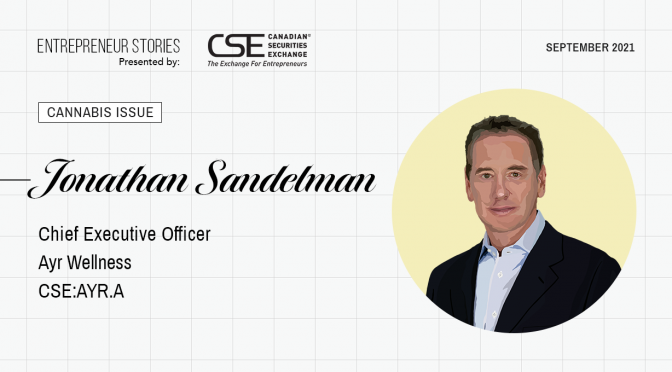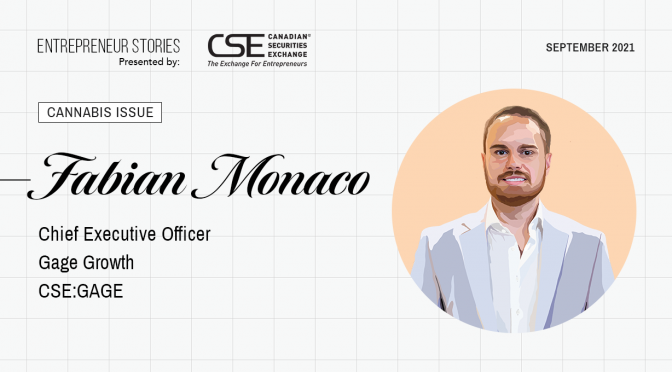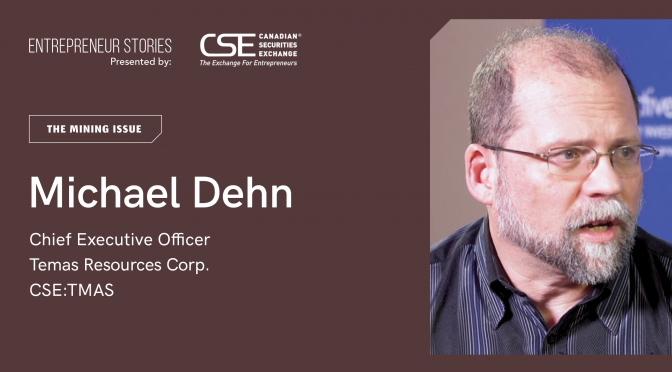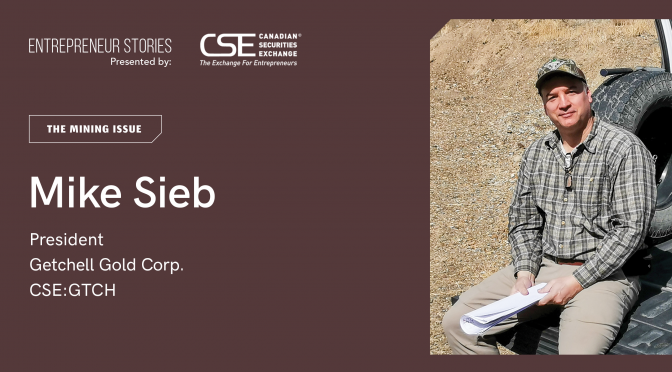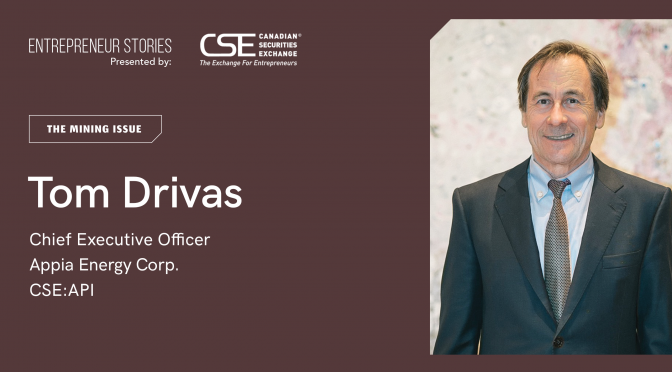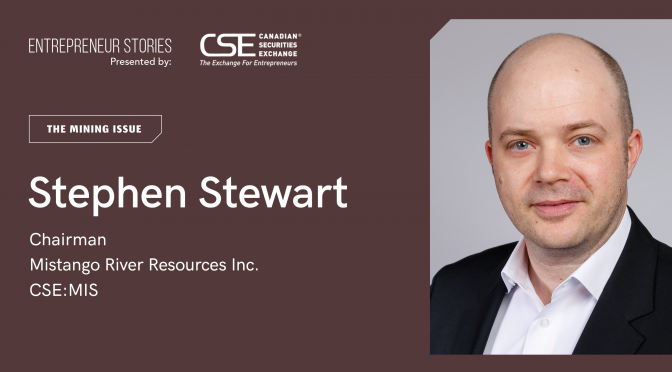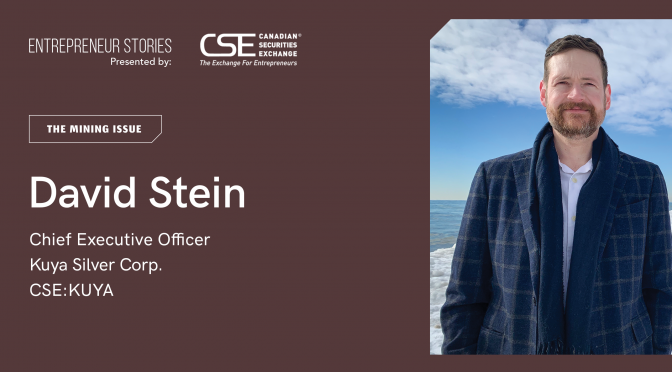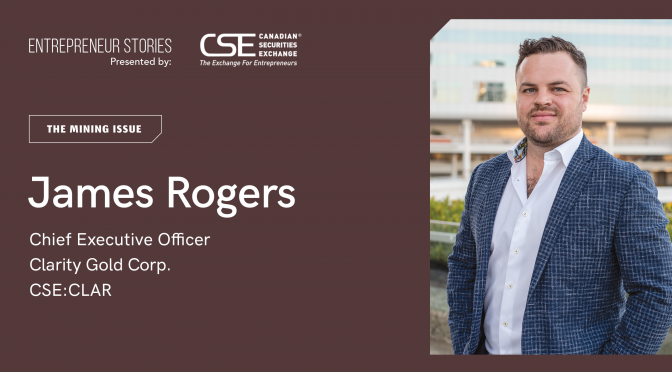Jonathan Sandelman, Chief Executive Officer of Ayr Wellness (CSE:AYR.A), takes interviews in a decidedly different direction than most CEOs. Rather than highlighting his company’s assets and achievements, Sandelman prefers to talk about the thing that, in his mind, most determines commercial success: corporate culture.
Ayr has big goals, and with nearly US$1.5 billion in assets on its balance sheet is well on its way to achieving them. The company expands organically thanks to exceptional product quality, and also through acquisitions, which can be tricky at the best of times.
But at the end of the day, if everyone at Ayr embraces Sandelman’s philosophy, and everyone pulls in the same direction, that’s the edge needed to come out on top. It’s an old saying in the investment industry, where Sandelman rose to become President of Bank of America Securities, that if you can’t tell someone what your edge is in just a few seconds, you don’t have one. Sandelman knew what Ayr’s edge was the day he established the company.
We connected with Sandelman in early July to discuss Ayr’s growth to date and the foundations of his confidence about its future.
Ayr has a very clear vision of where it is going and how it intends to get there. Talk to us about Ayr’s mission as a company and the corporate culture you need to make it a reality.
Our goal and mission statement at Ayr is to be the largest scale producer of high-quality flower in the United States. We don’t mean to insinuate that there aren’t smaller, boutique growers that grow really high-quality flower. But in the large MSO arena, we think one of the things that differentiates our company is our cultivation of high-quality flower at large scale.
Now, why is that important? First of all, in business you need to do something that differentiates your brand. In business school, we were taught about the unique selling proposition – what differentiates your brand from all other brands?
When we think about the industry and when we listen to our competitors, they talk a lot about branding, being a CPG (consumer packaged goods) company, and they are very focused on their box. “How does my box look?”
At Ayr, we tell our teammates, those in the marketplace, and our investors that it’s not about the box, but what’s inside the box. We believe that any time you underestimate the consumer, who has choice, who has multiple alternatives to consider – and for sure this industry is going to get more competitive – when you underestimate the consumer, I don’t care what business you’re in, you’re making a mistake. Because they know.
When I started my career as an investor, I typically bought into companies I thought had the best product in that category.
A lot of people in business want to be like Nike and Apple. I don’t buy Nike because it’s in an orange box. I buy it because I’ve been a marathoner and what’s inside the box is what motivates me to buy their product. When I think about Apple, while I think they have beautiful white boxes, I buy it because it’s the best laptop or phone. If it was simply an orange box or white box without being the best product, I wouldn’t buy it.
In Pennsylvania, we had our first harvest, our first flower for wholesale and our store shelves. The market tried our product and it sold out in a week. The consumer knows. We aimed to produce the highest quality flower in a market lacking high-quality product and it sold out in a week.
And then we recently introduced our Seven Hills flower brand. Again, consumers recognized the quality of our product and it sold out in a week. That’s why our focus is on growing the best quality flower.
Acquisitions are an important part of Ayr’s growth strategy. How do you assess potential acquisitions, and how do you successfully integrate acquired businesses?
We identify early on which states we want to build our businesses in. Then we have our M&A and strategy teams go into those markets and try to find the best assets. I’ve said from day one that the way I want to build this business is to cluster and penetrate. I like contiguous states so that when the consumer travels into a nearby market, they may not know the brands, but then they see the Ayr brand and they know what that stands for. They are going to buy Ayr even when they have other choices.
Equally important, that seller, who will remain with the company in most cases, must believe in our ethos. They must believe in honesty, integrity and transparency, and have values consistent with ours.
With talent, you win. For me, the companies that have the best culture, the best vision and the best talent pool win. The perfect transaction is one where we get a great asset as well as more team members.
Ayr was incorporated in July 2017, yet you have hundreds of millions in revenue and some US$1.5 billion in assets. How did the company grow so quickly?
I’ve been an investor and an operator for more than 30 years, with a deep understanding of the capital markets. I told my investors that Ayr would be EBITDA positive and cash flow positive from day one. That’s the disciplined way to act.
We would be disciplined because we understood that the public markets are cyclical. We thought we could be more aggressive when a correction happened and assets got cheaper because we were EBITDA and cash flow positive.
That’s exactly what you saw us do. We bought our initial companies, we paused for 13 months, the correction happened, and then we got aggressive about certain companies. It’s my belief that this once-in-a-lifetime opportunity to buy assets at bargain prices will eventually go away. There will be some form of federal legalization, and then what I call the “wall of money” will come in. It will flood the market and these multiples we are buying at today will trade even higher.
We are still aggressive about buying because I don’t think this will last even another year or two. That is the thought process behind what the future will bring for Ayr.
Given your background in finance and understanding of the cannabis industry, what is your outlook for the next five years and how does that shape Ayr’s business strategy?
I expect federal legalization of this industry because it is irrational that it’s not already legal. When almost every state in the US has some type of cannabis program, does it really make sense not to be federally legal?
For those who are uncertain about cannabis, I would vote for the SAFE Banking Act because it puts controls around the industry and creates insight and transparency that doesn’t really exist on the federal level. If you bank this industry, you know all the cash flows, from where the money is coming and where the money is going.
If you think about where alcohol is trading in terms of multiples, there is a lot of upside in our industry’s multiples and in individual stock multiples.
Ayr news often highlights acquisitions or new retail locations. Talk about the team and the dedication it takes to operate successfully at the pace you set.
I’m a believer in a culture of excellence. I’ve always had this philosophy that talent is free. That whatever I pay, or our shareholders pay, the rewards they are able to produce are just spectacular. Even when we were just a two-state operator, we had some of the best EBITDA and cash flow in the industry.
I think about the vision, what talents are required, what are the job functions, and then I think about who that type of individual would be.
It’s culture. You can’t just be the smartest person in your lane, you also have to be an extremely respectful person. When we’re in a meeting and I’m pushing you, you always understand that I am not pushing you to herd you, but to get you to think at a pace, at a level that you haven’t been able to in the past.
When I hire people, I always tell them my goal is for them to say to me a year from now that they’ve become the best version of themselves. There is something about this culture and this team that inspires them to do their best work and be the best person they have ever been in business.
I think our culture is the secret asset on our balance sheet. If the 1,500th person has the same vision as the people at the top, and we have 1,500 pairs of oars all rowing in the same direction, toward the same vision, then we win.
You are talking to me for this interview, but I am getting too much credit. I am the one talking, but it’s because we have a great team. We have built the best operating system and tech stack so we integrate these companies seamlessly. The people are so talented, and the systems and controls are so good, that we make it look easy. But it’s not.
Ayr is its people, and its dedication to its teammates, to its community, to its shareholders. That’s the ethos of this company.
This story was featured in the Canadian Securities Exchange magazine.
Learn more about Ayr Wellness at http://www.ayrwellness.com

